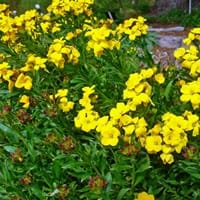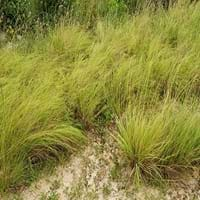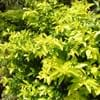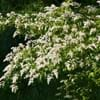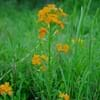Life Span
Annual and Perennial
Perennial
Type
Tender Perennial
Grass
Origin
Southern Europe, Mediterranean
Eastern Africa, Southern Africa
Types
Not Available
Robusta blue, Robusta green, Curvula
Number of Varieties
Not Available
Habitat
gardens, Grassland, Prairies
Cultivated Beds
USDA Hardiness Zone
7-9
7-13
AHS Heat Zone
9-7
12 - 10
Sunset Zone
4, 5, 6, 14, 15, 16, 17, 18, 19, 20, 21, 22, 23, 24
4, 5, 6, 7, 8, 9, 10, 11, 12, 13, 14, 15, 16, 17, 18, 19, 20, 21, 22, 23, 24
Habit
Mat-forming
Clump-Forming
Flower Color
Blue, Lavender
Gray, Lavender
Flower Color Modifier
Bicolor
Bicolor
Fruit Color
Green
Gray Green, Silver
Leaf Color in Spring
Gray Green
Green, Dark Green
Leaf Color in Summer
Gray Green
Light Green
Leaf Color in Fall
Gray Green
Dark Green, Bronze
Leaf Color in Winter
Light Green
Yellow, Dark Green, Bronze
Leaf Shape
Linear
Grass like
Plant Season
Spring, Summer, Fall, Winter
Summer, Fall, Winter
Sunlight
Full Sun, Partial Sun
Full Sun
Type of Soil
Loam, Sand
Loam, Sand
The pH of Soil
Neutral, Alkaline
Acidic, Neutral, Alkaline
Soil Drainage
Well drained
Well drained
Bloom Time
Spring, Late Spring, Early Summer, Summer, Late Summer, Early Fall
Late Summer, Early Fall
Tolerances
Drought
Drought
Where to Plant?
Container, Ground, Pot
Ground
How to Plant?
Seedlings, Stem Cutting
Seedlings
Plant Maintenance
Medium
Medium
Watering Requirements
Allow soil to be completely dry in between waterings, Water Deeply, Water less during winter
Average Water Needs
In Summer
Lots of watering
Lots of watering
In Spring
Moderate
Moderate
In Winter
Average Water
Average Water
Soil pH
Neutral, Alkaline
Acidic, Neutral, Alkaline
Soil Type
Loam, Sand
Loam, Sand
Soil Drainage Capacity
Well drained
Well drained
Sun Exposure
Full Sun, Partial Sun
Full Sun
Pruning
Cut or pinch the stems, Do not prune during shooting season, Prune if you want to improve plant shape, Prune prior to new growth, Remove deadheads
Cut back old stems to the ground
Fertilizers
No fertilizers needed
Requires high amount of nitrogen
Pests and Diseases
fungus, Insects, Red blotch
No serious insect or disease problems
Plant Tolerance
Drought
Drought
Flower Petal Number
Single
Single
Foliage Texture
Fine
Fine
Foliage Sheen
Matte
Matte
Attracts
Bees, Birds, Butterflies
Not Available
Allergy
Skin irritation
conjunctivitis, Pollen
Aesthetic Uses
Beautification, Showy Purposes
Borders, Showy Purposes
Beauty Benefits
Not Available
Not Available
Environmental Uses
Air purification
Erosion control
Medicinal Uses
No Medicinal Use
No Medicinal Use
Part of Plant Used
Whole plant
Leaves, Seeds
Other Uses
Showy Purposes
Used as a grain, Used to make baskets, brooms, hats
Used As Indoor Plant
No
No
Used As Outdoor Plant
Yes
Yes
Garden Design
Alpine, Container, Edging, Foundation, Groundcover, Mixed Border, Rock Garden / Wall
Bedding Plant, Container, Edging, Groundcover, Mixed Border, Rock Garden / Wall
Botanical Name
Erysimum cheiri
ERAGROSTIS curvula
Common Name
Wallflower
Weeping Lovegrass
In Hindi
पीला Wallflower
Weeping Lovegrass
In German
Yellow Wallflower
Weinend lovegrass
In French
Yellow Wallflower
Weeping lovegrass
In Spanish
alhelí amarillo
Pasto llorón
In Greek
κίτρινο Wallflower
κλάμα Lovegrass
In Portuguese
Wallflower amarelo
chorando lovegrass
In Polish
Żółty Wallflower
Płacząca Lovegrass
In Latin
Crocus Wallflower
Plorans Lovegrass
Phylum
Magnoliophyta
Magnoliophyta
Class
Magnoliopsida
Liliopsida
Order
Brassicales
Cyperales
Family
Brassicaceae
Poaceae
Genus
Erysimum
Eragrostis
Clade
Angiosperms, Eudicots, Rosids
Angiosperms, Commelinids, Monocots
Tribe
Not Available
Eragrostideae
Subfamily
Not Available
Chloridoideae
Number of Species
Not Available
Not Available
Importance of Yellow Wallflower and Weeping Lovegrass
Want to have the most appropriate plant for your garden? You might want to know the importance of Yellow Wallflower and Weeping Lovegrass. Basically, these two plants vary in many aspects. Compare Yellow Wallflower and Weeping Lovegrass as they differ in many characteristics such as their life, care, benefits, facts, etc. Every gardener must at least have the slightest clue about the plants he wants to plant in his garden. Compare their benefits, which differ in many ways like facts and uses. The medicinal use of Yellow Wallflower is No Medicinal Use whereas of Weeping Lovegrass is No Medicinal Use. Yellow Wallflower has beauty benefits as follows: Not Available while Weeping Lovegrass has beauty benefits as follows: Not Available.
Compare Facts of Yellow Wallflower vs Weeping Lovegrass
How to choose the best garden plant for your garden depending upon its facts? Here garden plant comparison will help you to solve this query. Compare the facts of Yellow Wallflower vs Weeping Lovegrass and know which one to choose. As garden plants have benefits and other uses, allergy is also a major drawback of plants for some people. Allergic reactions of Yellow Wallflower are Skin irritation whereas of Weeping Lovegrass have conjunctivitis and Pollen respectively. Having a fruit bearing plant in your garden can be a plus point of your garden. Yellow Wallflower has no showy fruits and Weeping Lovegrass has no showy fruits. Also Yellow Wallflower is not flowering and Weeping Lovegrass is not flowering . You can compare Yellow Wallflower and Weeping Lovegrass facts and facts of other plants too.
